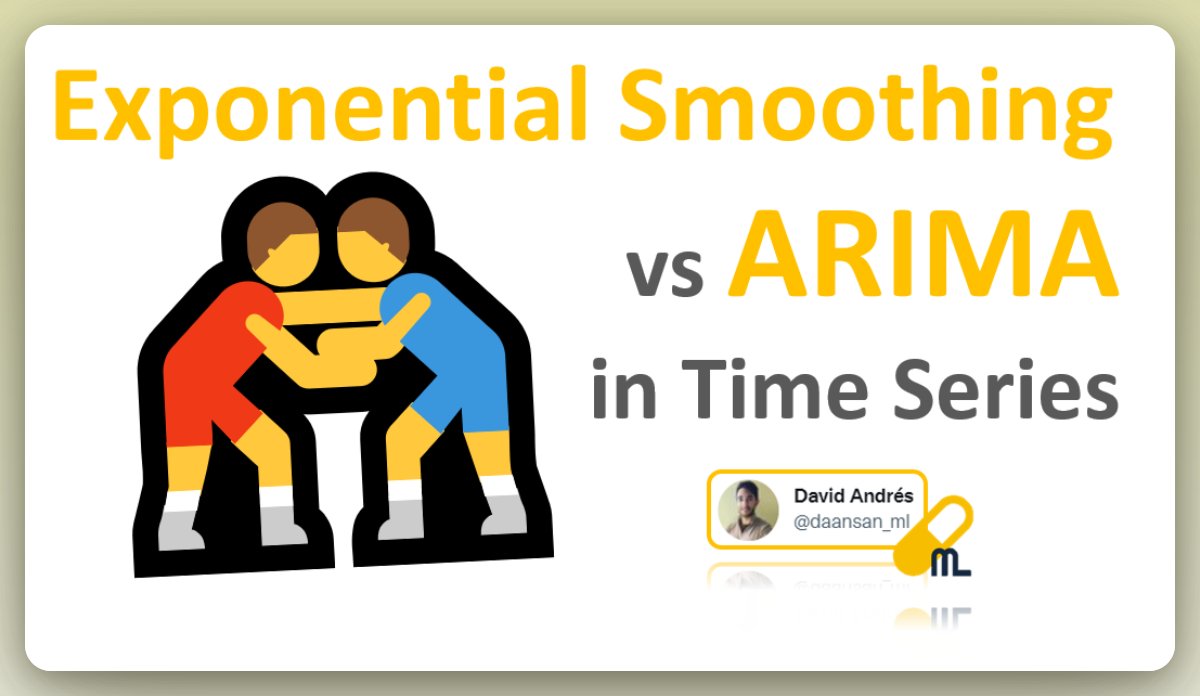Thread
Exponential Smoothing and ARIMA are great for Time Series forecasting.
But... what are their differences? 🤔
🧵 THREAD🧵
👇👇👇👇
#MachineLearning #DataScience #Python #AI #ML
But... what are their differences? 🤔
🧵 THREAD🧵
👇👇👇👇
#MachineLearning #DataScience #Python #AI #ML
⭐Exponential Smoothing models use past observations with exponentially decreasing weights.
⭐ARIMA models use differencing and linear regression.
⭐ARIMA models use differencing and linear regression.
This key difference makes them suitable for different cases.
Check them below 👇👇👇👇👇
Check them below 👇👇👇👇👇
• Exponential Smoothing models are more suitable for capturing short-term trends and seasonal patterns, while ARIMA models are better at modelling complex long-term trends and non-seasonal patterns.
• Exponential smoothing models are common and well understood, making it easier for teammates to ramp onto and contribute to projects that use them.
• Exponential smoothing models are explainable and easy to understand, which is useful when working with skeptical stakeholders who may not trust models they don't understand.
• They do not require the data to be stationary, which makes them suitable for handling datasets that cannot be handled by other models like ARIMA models.
• They are also suitable for small datasets, as they do not have many parameters that need to be tuned.
This makes them faster and easier to work with than other more complex time series models.
This makes them faster and easier to work with than other more complex time series models.
• Exponential smoothing models have a relatively small set of hyperparameters that need to be specified before training, which again saves time and computational resources.
• They generally have lower time complexity than more complex time series models, making them a good choice if you have limited computational resources.
• Exponential smoothing models can handle missing data, but it may be easier to use other models like ARIMA models in these cases.
• It is easier to extend exponential smoothing models to handle nonlinear dependencies in the data, which is a useful feature that sets them apart from other time series models.
Both models have their advantages and disadvantages, and the choice of which to use depends on the specific characteristics of the time series being analyzed.
You can subscribe to our 📩 Newsletters so you don't miss out on any of our articles and additional content!
DSBoost:
dsboost.substack.com/
MLPills:
mlpills.substack.com/
DSBoost:
dsboost.substack.com/
MLPills:
mlpills.substack.com/
Mentions
See All
RS Punia🐍 @CodingMantras
·
Mar 9, 2023
Nice thread!!!
